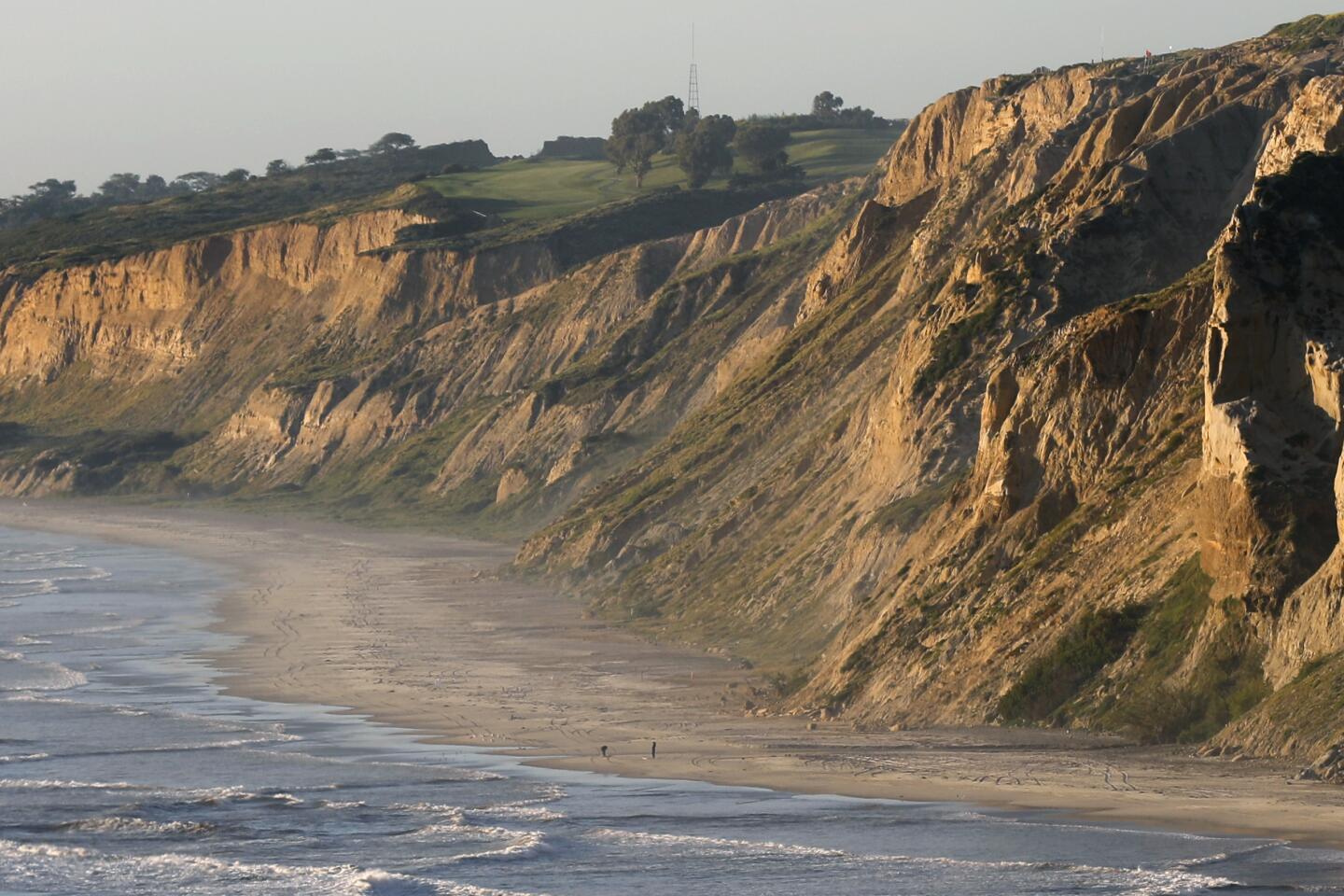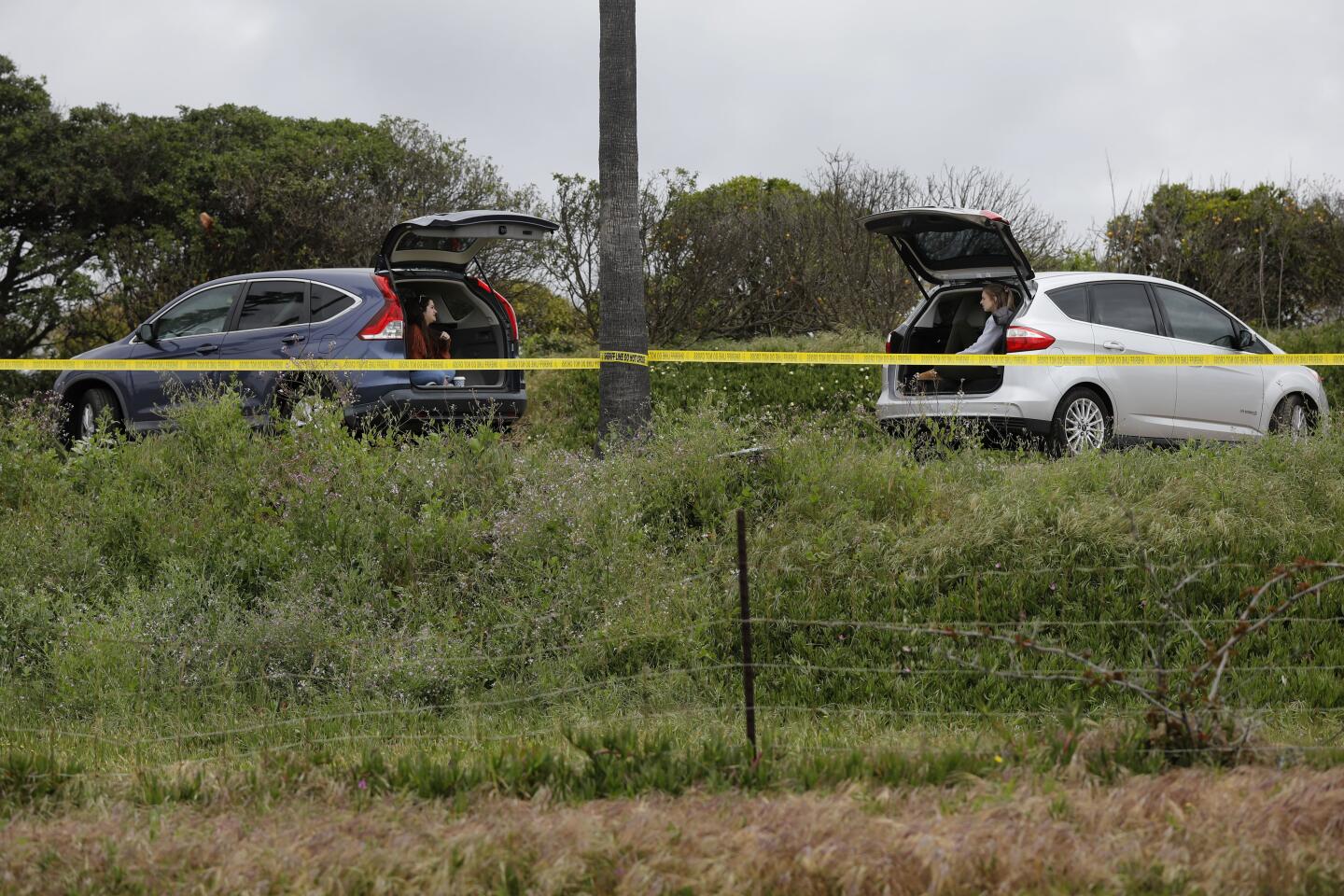A full beach closure. Motor officers patrolling the boardwalks. A two-month “red tide” event. San Diego’s mellow beach vibe took a historic detour on its lead up to summer 2020.
Saturday is the first day of summer, and all is right at San Diego County’s beaches.
The sun is out, the water is blue, parking lots are full, and folks can lay out on their tortilla-patterned towels after womping in the surf on their blow up flamingo-shaped floaties.
What a difference a month makes.
In a town where the beach is many people’s second home, the scenes that played out along the coast this spring were some that the world has never seen.

From an unprecedented full beach closure due to COVID-19, to motor officers patrolling the boardwalks, to a historic two-month “red tide” event, San Diego’s mellow beach vibe took a detour on its normal lead-up to summer.
As the coronavirus pandemic swept the world, San Diego County could see what was headed its way. As spring-breakers started to descend on places such as Pacific Beach, the state started to lock down. On March 15, California Gov. Gavin Newsom called for all bars, wineries, nightclubs and brewpubs to close. As late winter storms moved through the region the first week of spring, along with the full closures of the beaches a few days later, spring break was over before it started.
Eventually all San Diego County beaches would be closed and stay-at-home orders were put in place. It wasn’t just the beaches and bars that closed; it was everything iconic that makes San Diego, well, San Diego, like Mission Bay, La Jolla Cove, the boardwalks and the Hotel del Coronado, which suspended operations for the first time in its 132-year history.
During the first couple weeks of the stay-at-home orders in late March and early April, San Diego was hit with record rainfall. Many of the days were windy and surf was awful, making it easy for locals to take a time-out from beach trips. But by mid-April, the sun came out and summer-like conditions were here to stay.
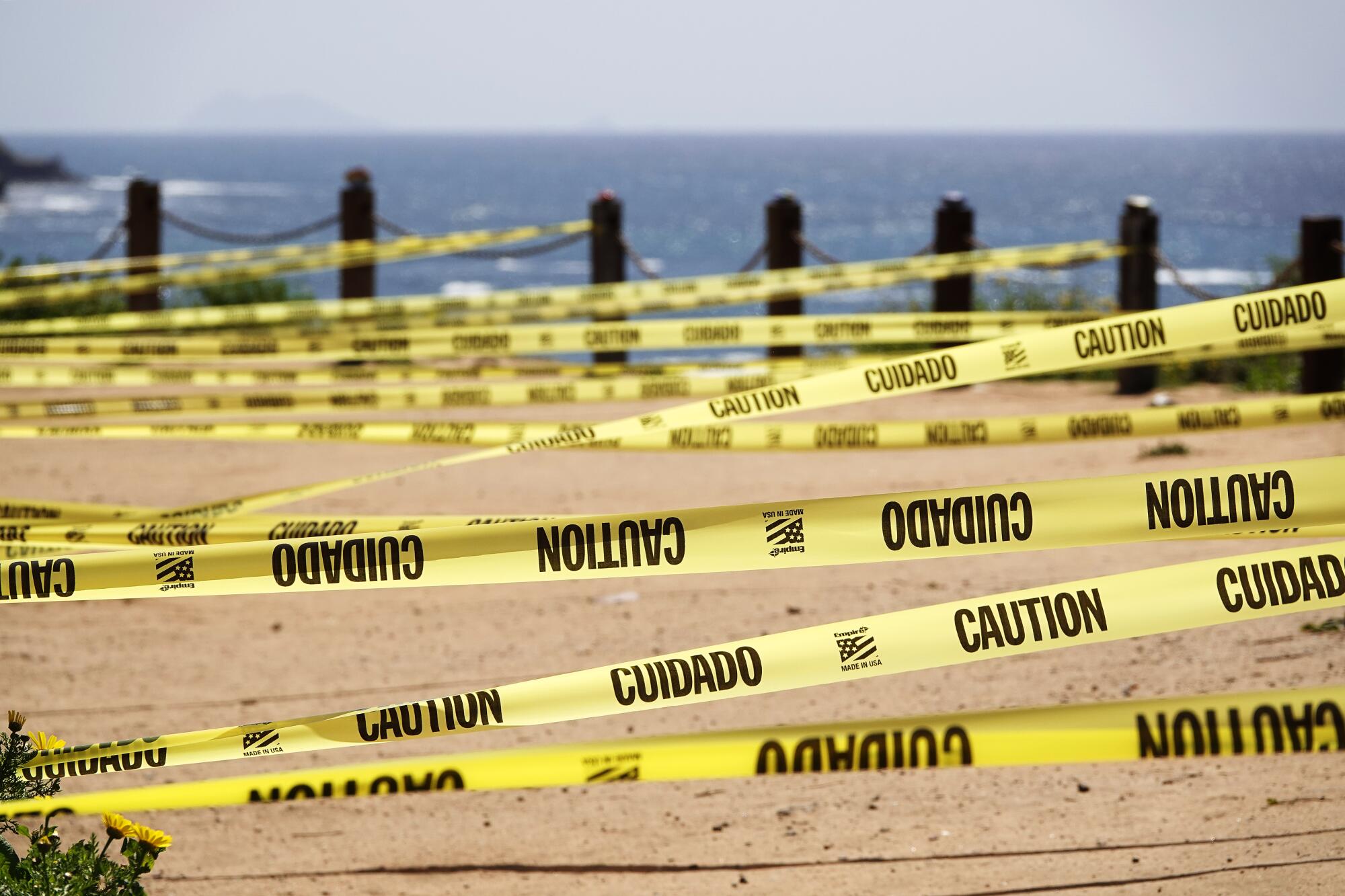
People who snuck out to see their beloved coast were welcomed by closed parking lots, walls of caution tape and a host of law enforcement and lifeguards making sure no one crossed the boundary. But beyond the tape, many beaches offered glimpses of what they looked like many moons ago. There were beautiful scenes of no people, no umbrellas, no trash, just native birds nestled in the silky smooth sand with no footprints. Seals slept in peace along the rocky shore of La Jolla Cove without having to howl at tourists getting too close while taking selfies. Miles of vast empty coastline, especially places blocked by cliffs such as Black’s Beach, with no signs of civilization in sight, made for beautifully eerie landscapes.
With people out of school and work, and beach weather on hand, some folks made their way past the caution tape and found secluded coves to relax, while some surfers played cat and mouse with authorities. Some surfed early mornings and others at sunset after lifeguards went home. While some argued surfing was the ultimate socially distancing sport, they pointed out the throngs of people standing in close proximity along the street watching the sunset daily at the closed beaches. Other surfers went for it midday, defying the rules, sometimes having perfect waves alone for a while before being shooed away by lifeguards. One of those surfers, Jake Halstead, said,”I stayed out of the water for three weeks, and then I started to go crazy. I had a few 5 a.m. surf sessions completely by myself and it was pretty awesome.”
Halstead, 26, a pro surfer, was one of two surfers in the lineup one evening at La Jolla’s Windansea Beach when a lifeguard boat sped in with lights flashing. In a uniquely San Diego-style pursuit, the surfers scampered out of the water and up the bluffs as the crowd, gathering to watch the sunset, cheered them on. There was no real effort to catch them and they were not cited. Meanwhile, police officers blared on the bullhorn for sunset watchers to keep moving and social distance, with little compliance.
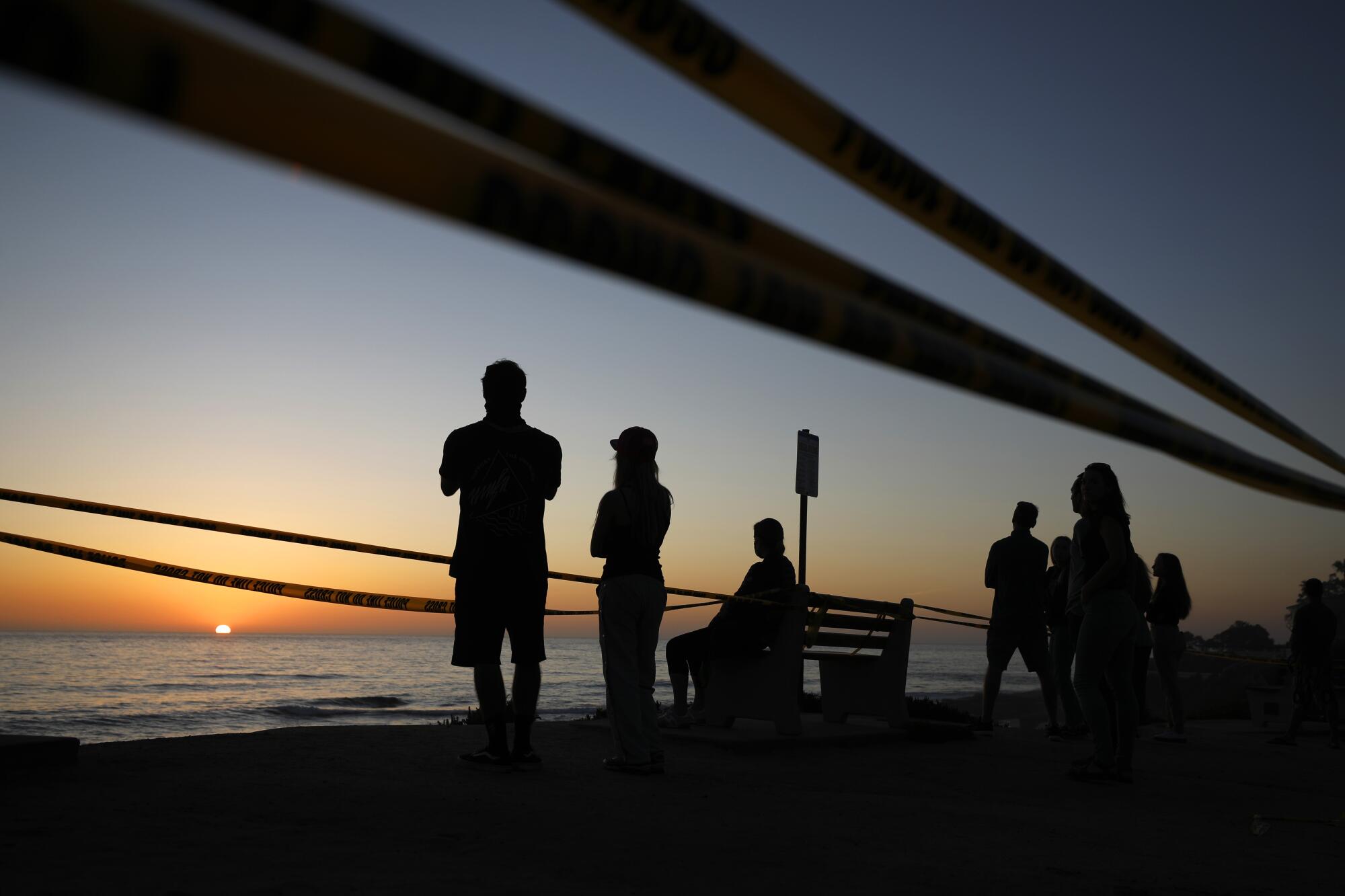
As the natives started getting more restless, more restrictions were put into place as word had gotten out that the beach was the place to be, even though they were closed. Encinitas closed the pedestrian and cycling path along the west side of South Highway 101 and the popular Coastal Rail Trail. Police stepped up patrols in Sunset Cliffs where crowded, nightly parties were happening. No parking signs were put up along the west side of Sunset Cliff Boulevard to deter people from visiting the area. That move led to people parking further into the neighborhoods. Others used their vehicles, parked within an ocean view, as their new hangout spot.
As cities locked down, there started to be push back from some residents. Weekend protests to reopen businesses started to pop up though the county. During A Day of Freedom rally in Pacific Beach in late April, hundreds of people stood shoulder to shoulder, most not wearing masks, demanding officials open the beaches and businesses. In a surreal scene, police officers monitored the shouting protesters, while other officers a few feet away made sure no one stepped onto the vast, empty beach.

While the beaches were still closed in late March, another historic phenomena was taking shape along the Southern California coast. A spring phytoplankton bloom, also known as the red tide, was starting to form. While it is a normal, but irregular occurrence and typically lasts about two weeks this time of year, scientists started taking notice a few weeks in. The phytoplankton, which causes the ocean water to turn ruddy brown, creates electric blue waves at night.
“This was a truly historic red tide event, both in terms of duration and geographic extent,” said Dr. Clarissa Anderson, executive director of Southern California Coastal Ocean Observing System at Scripps Institution of Oceanography. “Once we started getting more data on the biology and physics, we realized it was hitting levels we’d never seen at the Scripps Pier.”

The spectacular bioluminescent waves were shown repeatedly on social media and news reports, attracting even more cooped up people to the beach. Areas like Sunset Cliffs and La Jolla Shores were overwhelmed with traffic and people at night. Some weekday nights made the areas look more like a crowded summer day, with hundreds of people lining the shore marveling at the glowing waves at the same beaches that were completely closed a few days before. “The bioluminescence lasted for many weeks and was the brightest I had ever seen, and a particularly vibrant blue that enthralled the community,” added Anderson.
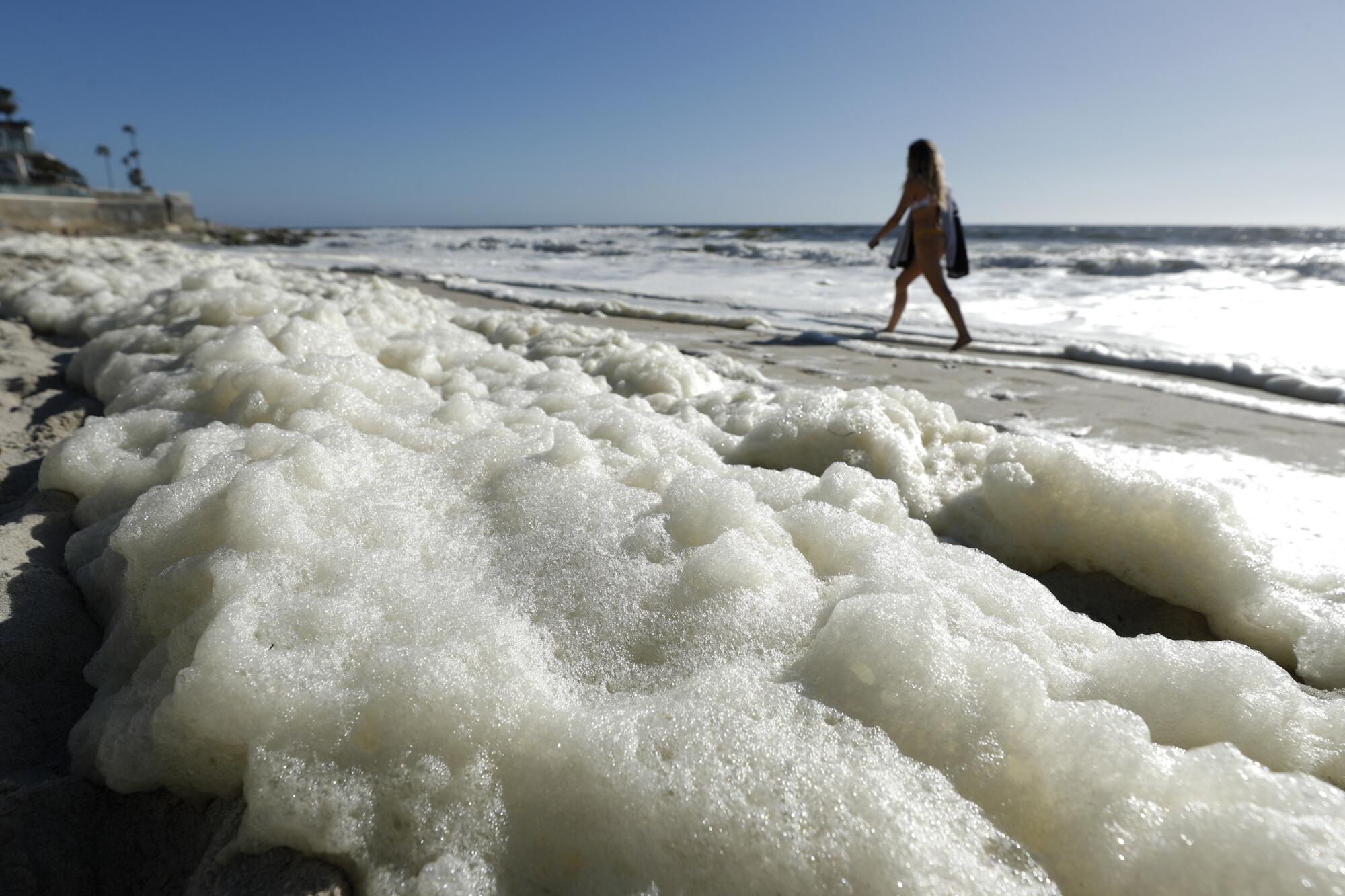
While wowing locals with the nightly light show, the incredibly high biomass led to very intense reddish-brown water. The highest cell numbers of Lingulodinium polyedra ever were recorded at Scripps Pier and scientists at Scripps Institution of Oceanography measured the highest chlorophyll concentrations since the Chlorophyll Program began in 1983.
As the bloom decayed and the organic matter was broken down by bacteria, oxygen became depleted in the water, killing fish all along the San Diego County coast and into southern Baja and places like the Batiquitos Lagoon. A variety of fish had washed onshore and were seen floating in the ocean. The decay also led to large swaths of foam floating in the water and coming ashore throughout the county. At many beaches, the surfline looked as if it had snowed with the amount of foam that accumulated. Along with that came an unwelcoming smell throughout the county that lasted several weeks.
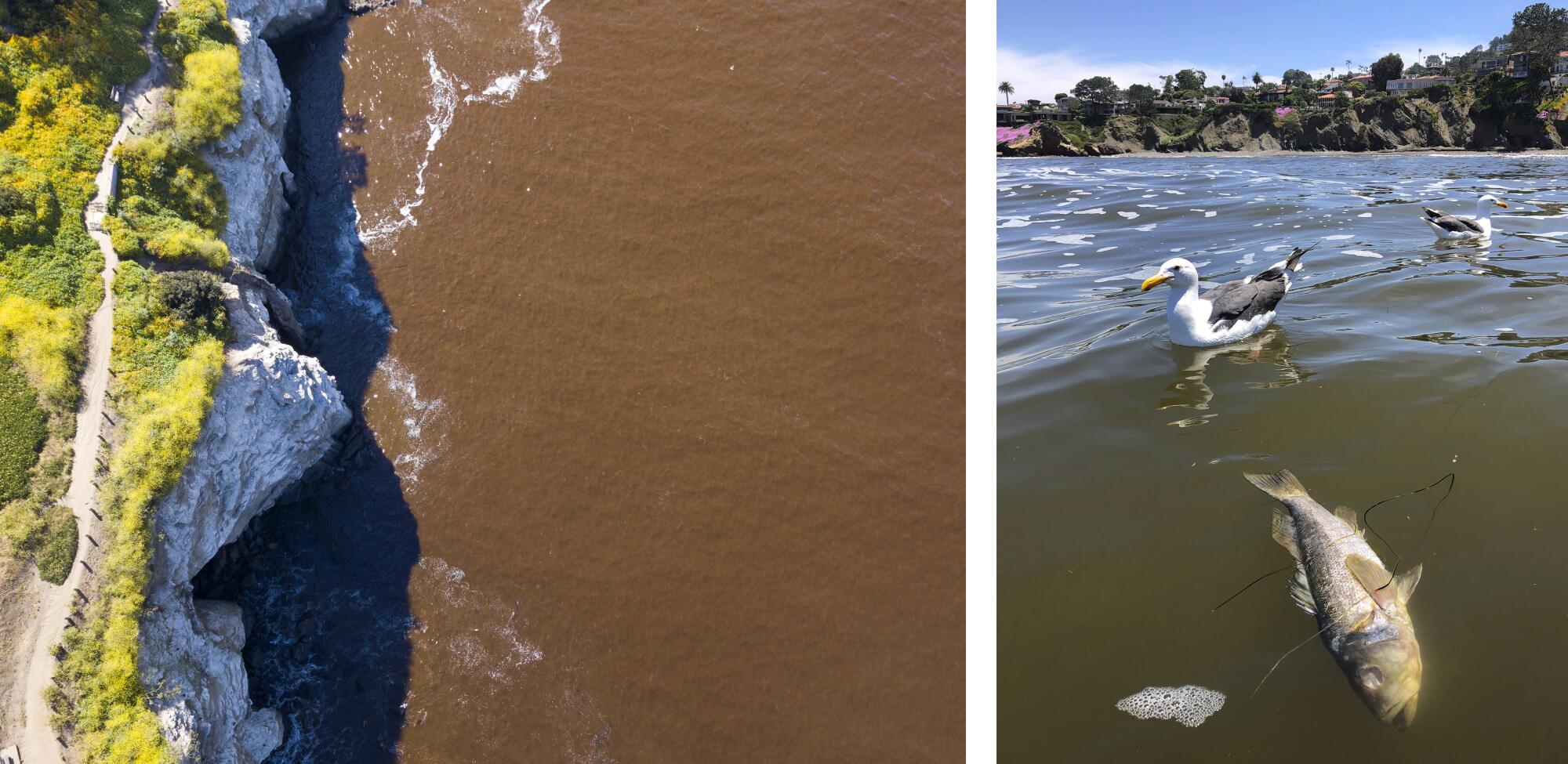
During the two-month red tide event, the dense water, along with small swell and light winds contributed to record high ocean temperatures. On May 4, the ocean hit 75 degrees off of the Scripps Pier. The average temperature for that time of year is 63 degrees.
San Diego city beaches eventually opened back up to activities like surfing and walking on April 27. While the surf was small and bumpy that day, the overall stoke level was through the roof for many who hadn’t been in the water, or even seen the beach, in weeks. And as beach-goers returned to the water, a 16-year-old body boarder was bumped by a shark in Encinitas. In Coronado a month later, a lifeguard on a paddle board past the surf break spotted a roughly 12-foot-long white shark. In both instances, signs were put up and an advisory was put out, but beaches were not closed.
Changes at the beach didn’t just effect the public. This year’s San Diego Regional Lifeguard Academy, which is made up of new lifeguards from San Diego’s coastal cities, took on a vastly different look. The normal close quarters of rescue drills, swimming, and running were adjusted to allow for social distancing. Cadets wore masks, forehead temperatures were taken daily, ankle bracelets were used for timed events so they could spread out and rescue boards were wiped down with bleach after each use. Rescue scenarios were modified significantly to adjust for the 6-foot distancing rule. Drills like rescue board victim pickups were scrapped. At the end of the training, the new lifeguards usually huddle around a lifeguard truck and a few rescue boards for a class photo at South Mission Beach. In this year’s photo, with masks on, the lifeguards and instructors sat and stood systematically 6 feet apart in a third of a football field-sized area, looking more like an abstract ‘80’s album cover.
Beaches eventually opened for sunbathing the Friday before the busy Memorial Day. With places such as The San Diego Zoo, SeaWorld and Legoland still closed, the beaches and bays were crowded. A younger crowd could be seen walking through Pacific Beach carrying their favorite oversized floaty characters to a publicized floatopia in Mission Bay’s Sail Bay, only to find police weren’t going to let that happen. Those over-sized blowup rafts were then used for front yard pool parties thorough the Pacific Beach neighborhood.
A trip to the beach these days, one might find predictable sights: Arizona tourists, umbrellas, surfboards, carefree kids running around like school has just let out. On Thursday, Gov. Gavin Newsom required all Californians to wear face coverings while in public following growing concerns about the coronavirus pandemic. While you will see lifeguards wearing masks at the beach, the majority of young people don’t, avoiding the trikini look, which really hasn’t caught on.
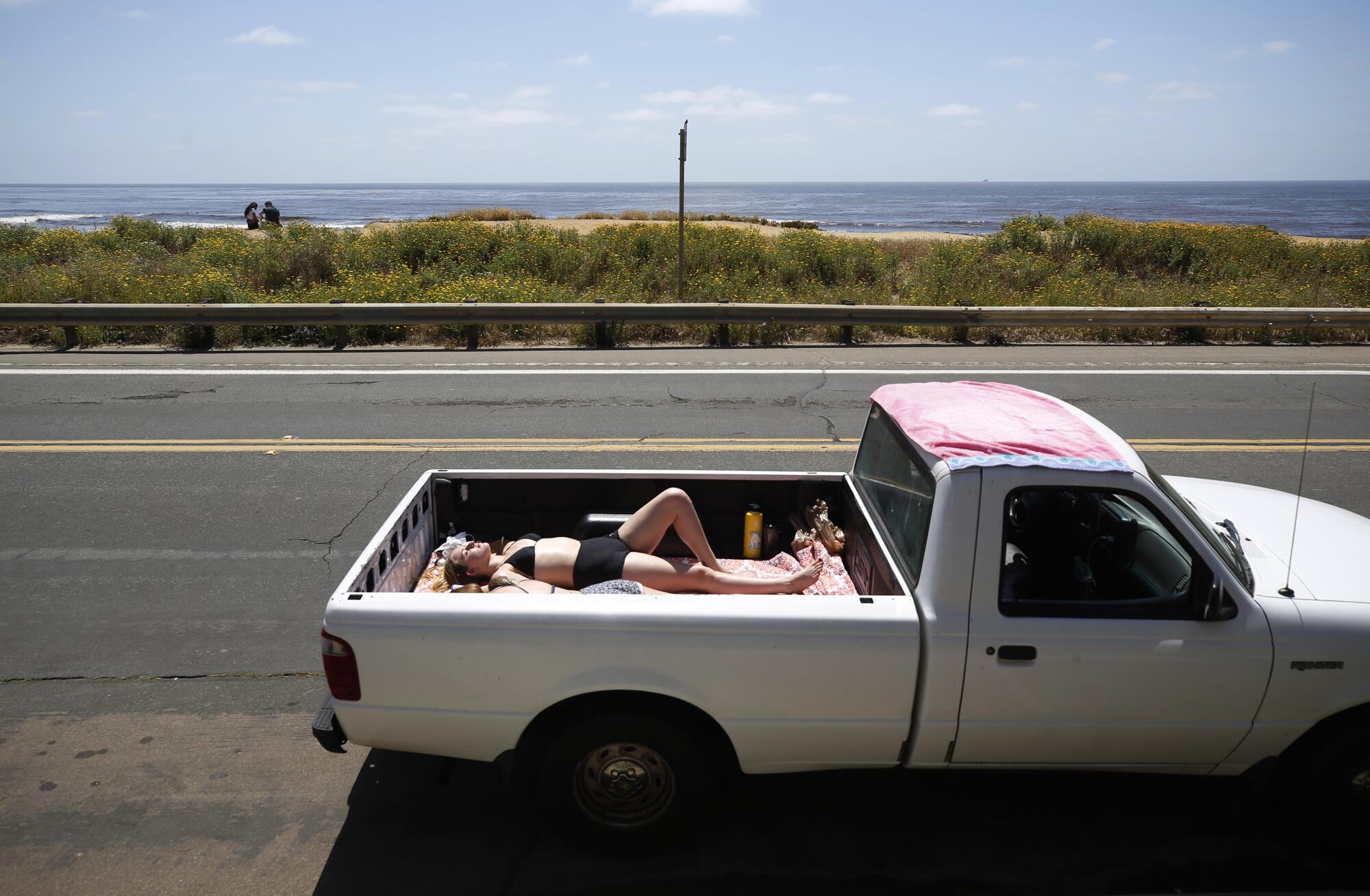
The latest news, as soon as it breaks.
Get our email alerts straight to your inbox.
You may occasionally receive promotional content from the San Diego Union-Tribune.

